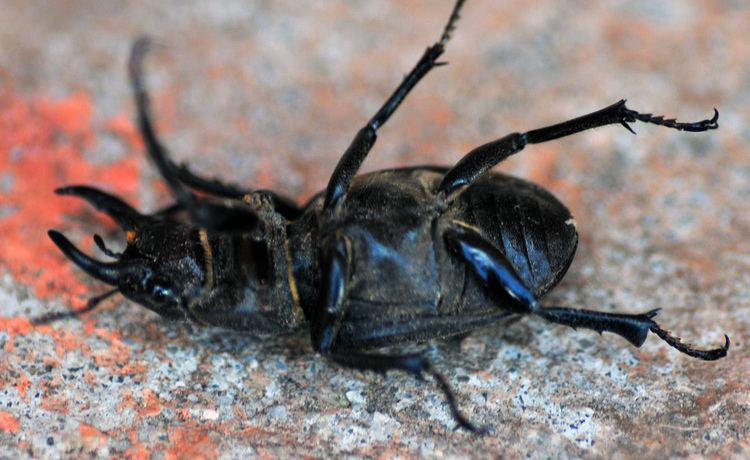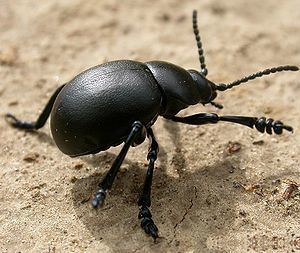Scientific name Polyphaga Rank Suborder | Higher classification Beetle | |
 | ||
Lifespan Callosobruchus maculatus: 10 – 14 days, Dynastes tityus: 3 – 6 months Length Colorado potato beetle: 1 cm, Dynastes tityus: 4 – 6 cm Lower classifications Longhorn beetle, Scarabs, Scarabaeoidea, Weevil, Leaf beetle | ||
Polyphaga saussurei 2
Polyphaga is the largest and most diverse suborder of beetles. It comprises 144 families in 16 superfamilies, and displays an enormous variety of specialization and adaptation, with over 300,000 described species, or approximately 90% of the beetle species so far discovered.
Contents

Key characteristics of Polyphaga are that the hind coxa (base of the leg), does not divide the first and second abdominal/ventral plates which are known as sternites. Also, the notopleural suture (found under the pronotal shield) is not present.

Polyphaga saussurei
Etymology

The name of polyphaga is derived from two Greek words: poly-, meaning 'many', and phagein, meaning 'to eat', so the suborder is called the “eaters of many things”.
Classification
The five infraorders are:

The internal classification of Polyphaga involves several superfamilies or series, whose constituents are relatively stable, although some smaller families (whose rank even is disputed) are allocated to different clades by different authors. Large superfamilies include Hydrophiloidea, Staphylinoidea, Scarabaeoidea, Buprestoidea, Byrrhoidea, Elateroidea, and Bostrichoidea.
The infraorder Cucujiformia includes the vast majority of phytophagous (plant-eating) beetles, united by cryptonephric Malpighian tubules of the normal type, a cone ommatidium with open rhabdom, and lack of functional spiracles on the eighth abdominal segment. Constituent superfamilies of Cucujiformia are Cleroidea, Cucujoidea, Tenebrionoidea, Chrysomeloidea, and Curculionoidea. Evidently adoption of a phytophagous lifestyle correlates with taxon diversity in beetles, with Cucujiformia, especially weevils (Curculionoidea), forming a major radiation.
